Panasonic of North America 96NKX-TG2770 2.4 GHz Cordless Phone (FHSS) User Manual KX TG2770S Apply
Panasonic Corporation of North America 2.4 GHz Cordless Phone (FHSS) KX TG2770S Apply
Users Manual
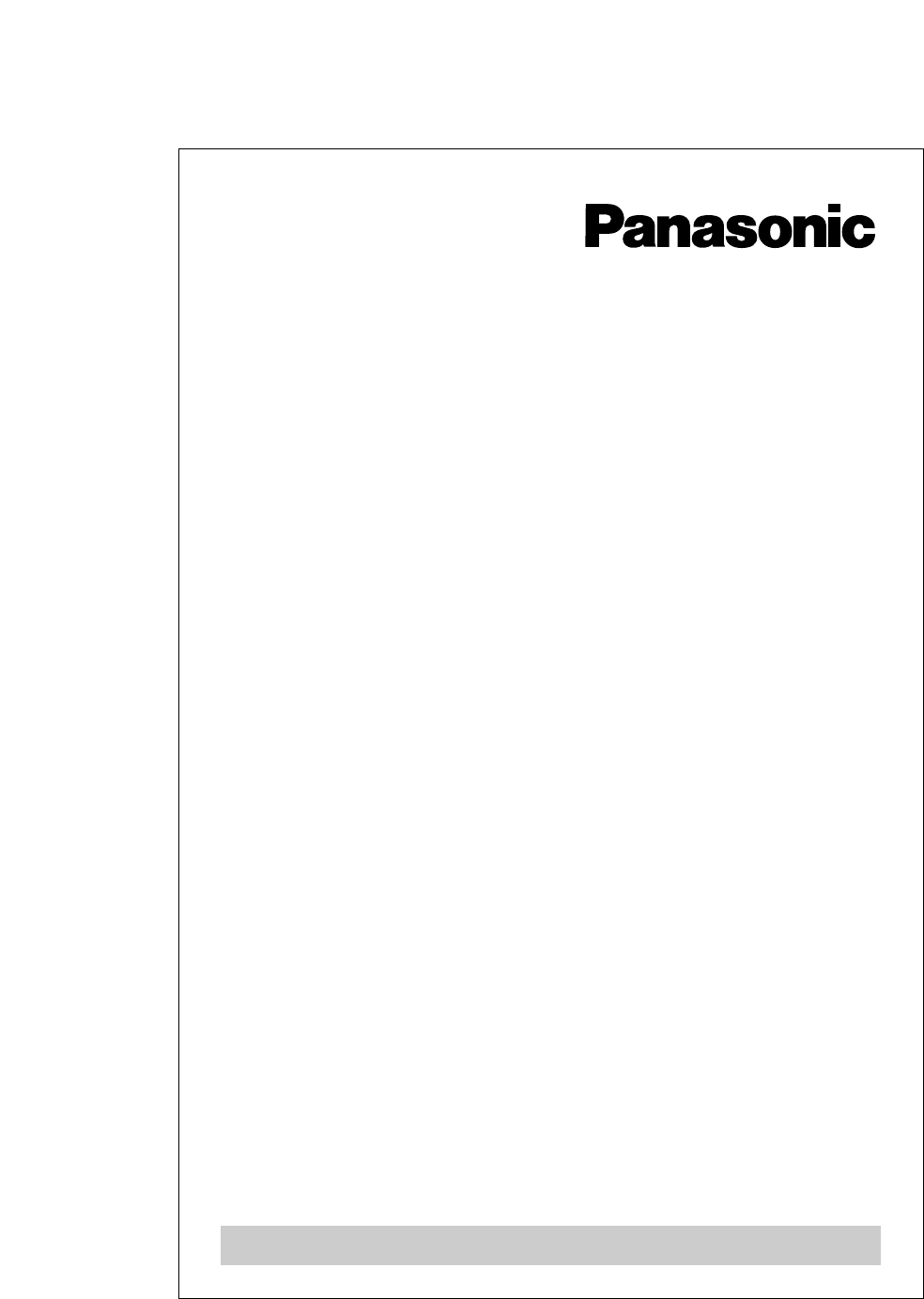
2.4GHz Expandable Cordless Phone System
Model No. KX-TG2770S
Pulse-or-tone-dialing capability
Operating Instructions
Charge the battery for about 15 hours before initial use.
PLEASE READ BEFORE USE AND SAVE.
Contents:
Location of Controls 2
Connections 5
Battery Installation/Battery Charge 6
Recording a Greeting Message 7
Making/Answering calls with the Cordless Handset 8
Making/Answering calls with the Base Unit 9
Caller ID Service 9
Automatic Answering Operation 10
Listening to Messages 10
Important Safety Instructions 11
FCC and Other Information 13
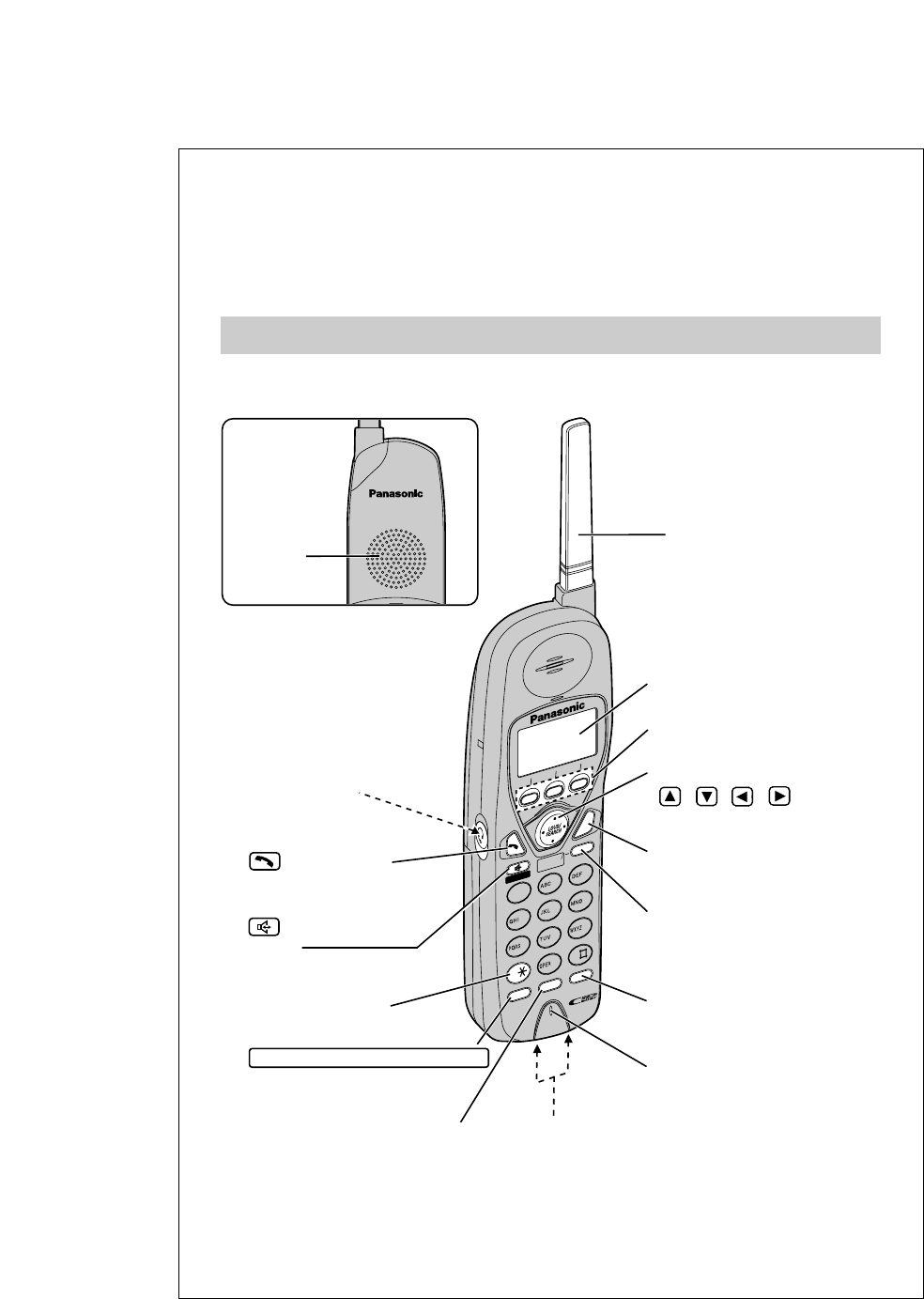
–2–
Please read IMPORTANT SAFETY
INSTRUCTIONS on page 11 before use.
Read and understand all instructions.
Location of Controls
■Cordless handset
INTERCOM
TRANSFER
CLEAR
SP-PHONE
HOLD
FUNCTION
REDIAL
CALL WAIT
2
1
3
4
5
6
78
TONE
0
9
CONF
TALK
OFF
FLASH
PAUS E
Back side
Speaker
Headset Jack
(*) (TONE) Button
(TALK) Button
(Speakerphone)
Button
Button
Microphone
Charge Contacts
Antenna
Display
(OFF) Button
(HOLD/CLEAR)
(INTERCOM/TRANSFER)
Button
(PAUSE/REDIAL)
Button
Soft Keys
Navigator Key
( , , , )
(
FLASH/CALL!WAIT
)
Button
CONF (Conference)/FUNCTION
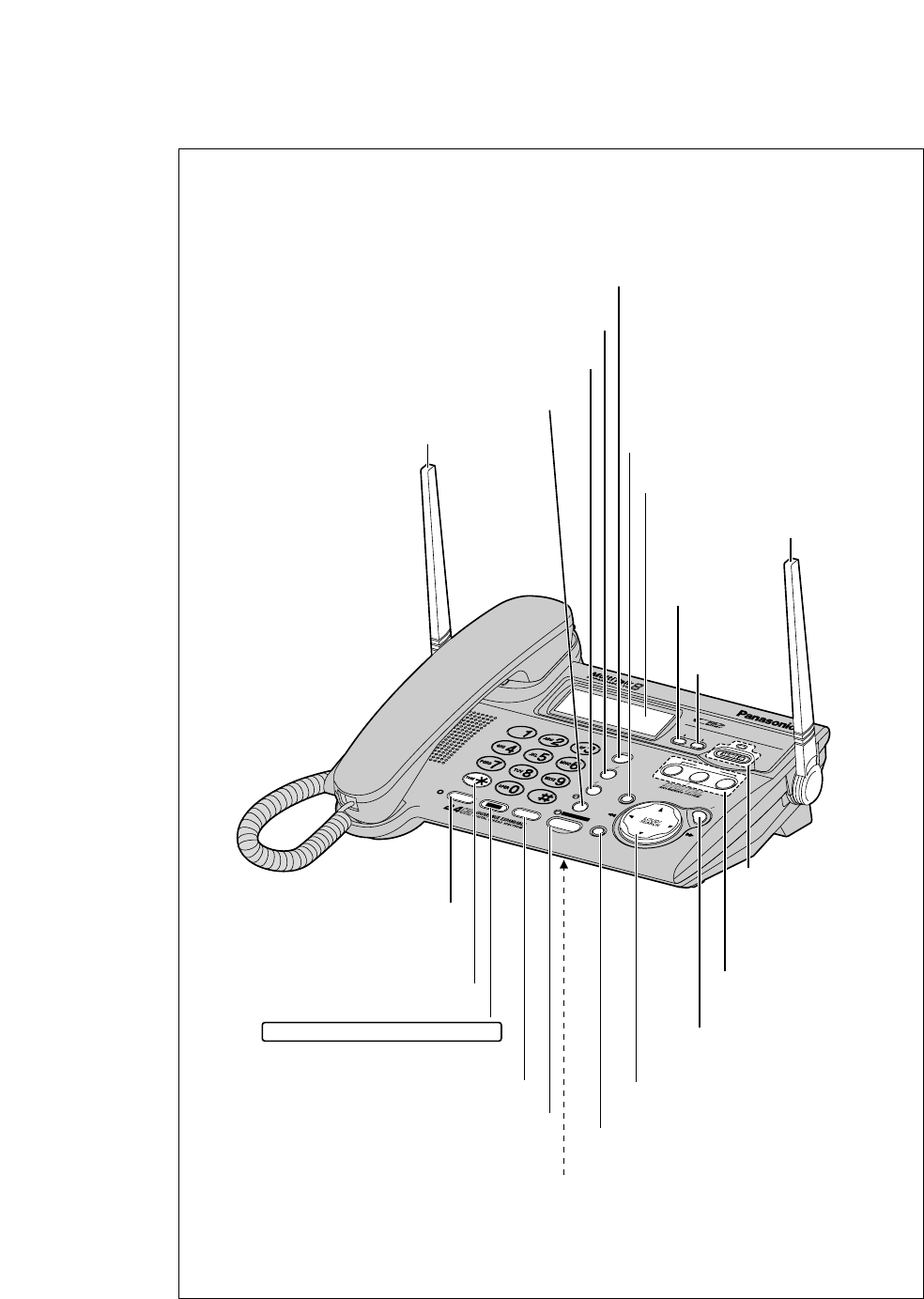
–3–
■Base unit
21 3
STOP
STOP
MAILBOX
MAILBOX
ERASE
ERASE
MIC
PL
PLAYBACK SLOW TALK
YBACK SLOW TALK
MUTE
MUTE
PRIVPRIVACYACY
DIG ITAL S
L SP
P
-PHONE
FUNCTION
FUNCTION
EDITEDIT
FL
FLASH
SH
CALL
CALL WAI
AIT
REDIAL
REDIAL PAUSE
AUSE
LOCATOR
LOCATOR
INTERCOM
INTERCOM
TRANSFER
TRANSFER
HOLD
HOLD
CONF
CONF
MEMO
MEMO
GREETING
GREETING
KX-TG
TG2770
Display
MIC (Microphone)
(DIGITAL!SP-PHONE)
(Speakerphone)
Button and Indicator
(MUTE) Button and Indicator
(FLASH/CALL!WAIT) Button
(REDIAL/PAUSE) Button
(LOCATOR/INTERCOM)
(TRANSFER) Button
and Indicator
(PRIVACY) Button
(HOLD) Button
Button
(ERASE) Button
(STOP) Button
(GREETING)
Button
(ANSWER!ON)
Button and
Indicator
(MEMO)
Button
Antenna
(*) (TONE) Button MAILBOX
Buttons
(FUNCTION/EDIT)
Button
Antenna
CONF (Conference)/FUNCTION
Navigator Key (F, G, I, H)
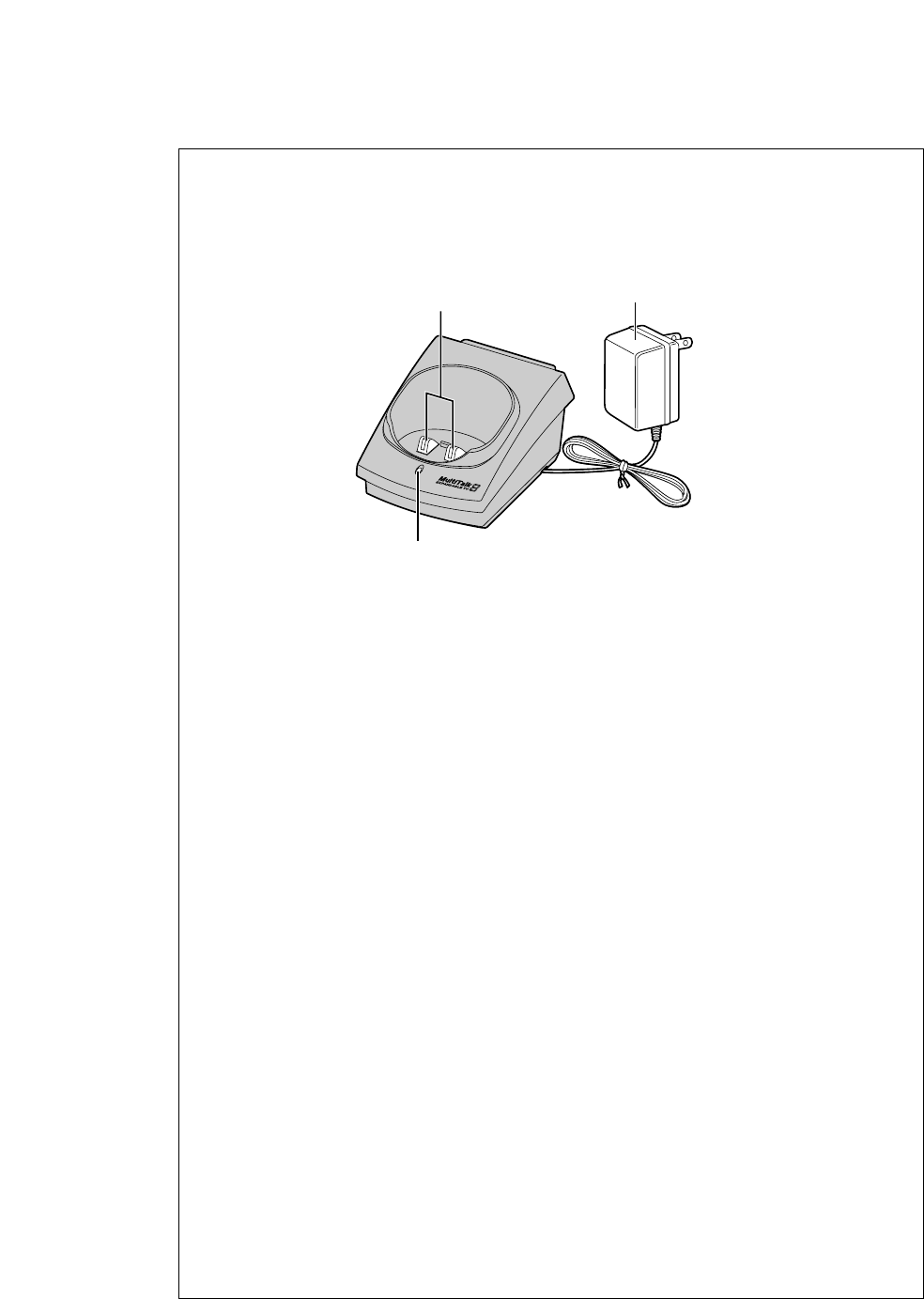
–4–
■Charger unit
CHARGE
CHARGE Indicator
AC Adaptor
Charge Contacts
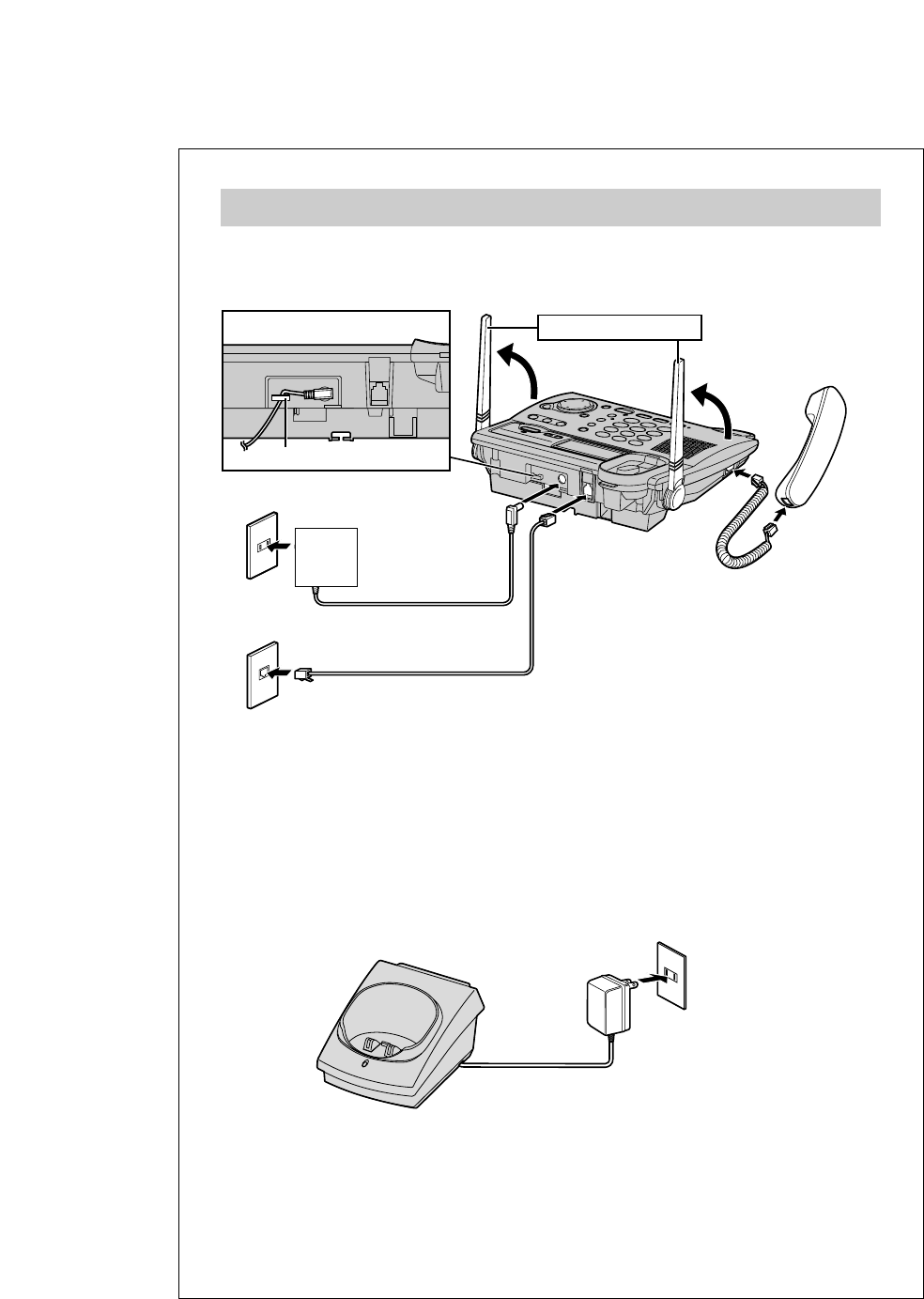
–5–
Connections
■Base unit
•USE ONLY WITH Panasonic AC ADAPTOR.
•The AC adaptor must remain connected at all times. (It is normal for the
adaptor to feel warm during use.)
Handset
Handset
Cord
Raise the antennas.
Telephone Line Cord
Power Outlet (AC 120 V, 60 Hz)
Fasten the AC adaptor cord.
Single-Line Telephone Jack (RJ11C)
Hook
AC
Adaptor
Power Outlet
(AC 120 V, 60 Hz)
AC Adaptor
CHARGEGE
•
USE ONLY WITH Panasonic AC ADAPTOR KX-TCA1 (Order No. KX-TCA1-G).
•The AC adaptor must remain connected at all times. (It is normal for the
adaptor to feel warm during use.)
■Charger unit
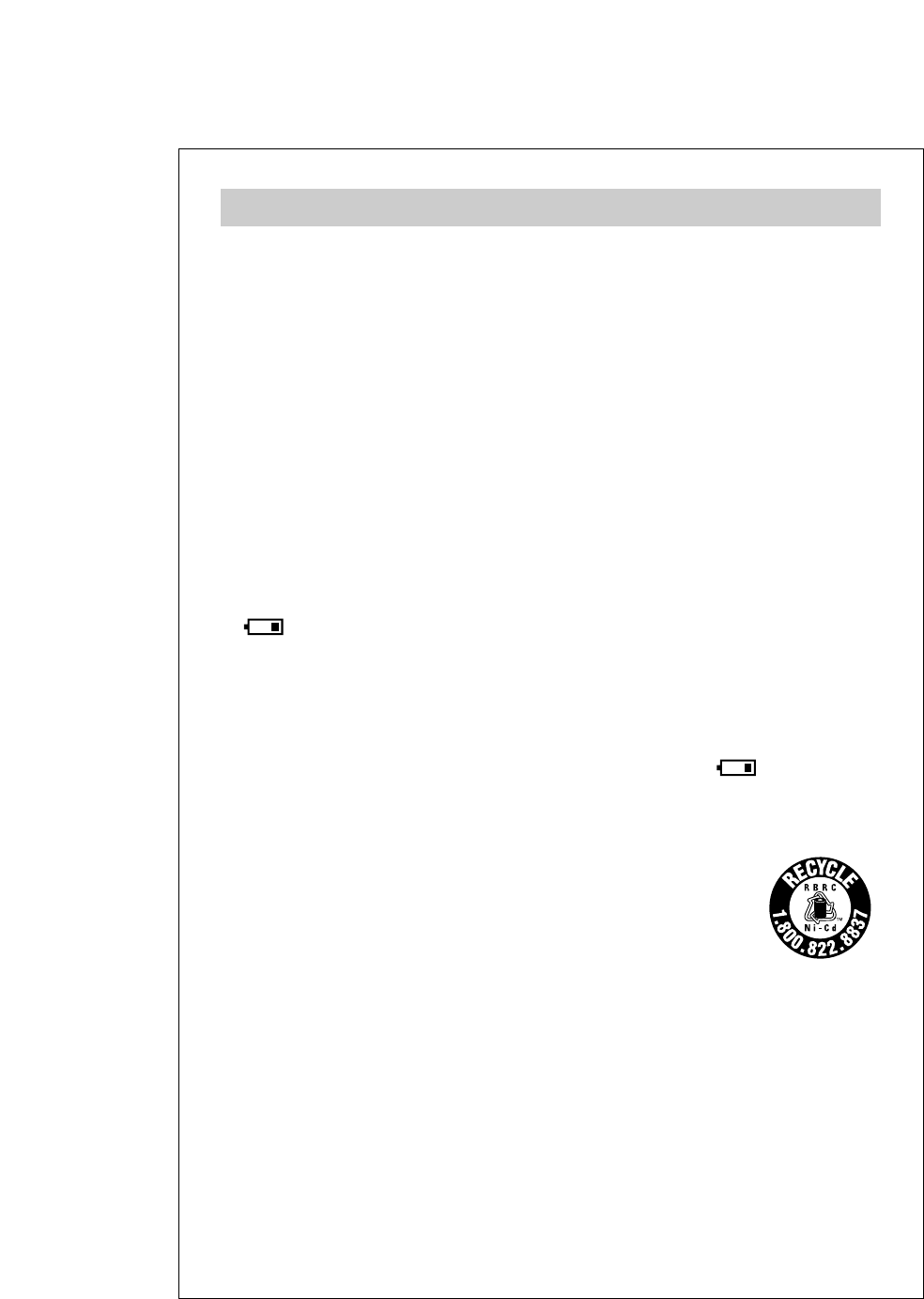
–6–
Battery Installation/Battery Charge
■Recharge
Recharge the battery when:
–"Recharge battery" is displayed,
–" " flashes on the display, or
– the cordless handset beeps intermittently while it is in use.
•Clean the handset and the base unit charge contacts with a soft, dry
cloth once a month. Clean more often if the unit is subject to grease,
dust or high humidity. If not, the battery may not charge properly.
•If the battery is fully charged, you do not have to place the handset on the
charger until "Recharge battery" is displayed and/or " " flashes. This
will maximize the battery life.
•The battery cannot be overcharged.
■Battery installation
1 Install the battery in the cordless handset.
2 Close the handset cover.
■Battery charge
To power the cordless handset, charge the battery.
Place the cordless handset on the charger for about 15 hours before initial
use.
A nickel cadmium battery that is recyclable powers the product
you have purchased. At the end of its useful life, under various
state and local laws, it is illegal to dispose of this battery into
your municipal waste stream. Please call
1-800-8-BATTERY for information on how to recycle this
battery.

–7–
You can record a personal greeting message of up to 2 minutes. If a greeting
message is not recorded, one of two pre-recorded greetings will be played
when a call is received.
•All messages (greeting, incoming, etc.) are stored in digital memory. The
total recording time is about 15 minutes. We recommend you record a
brief greeting message in order to leave more time for recording new
messages.
1 Press and hold (GREETING) until a long beep is heard.
2 After the long beep, talk clearly, about 8 inches (20 cm) away from the MIC
(microphone).
3 When finished, press (GREETING).
•If you do not record a greeting message, one of two messages will be played
when a call is received, depending on the caller’s recording time.
Recording a Greeting Message
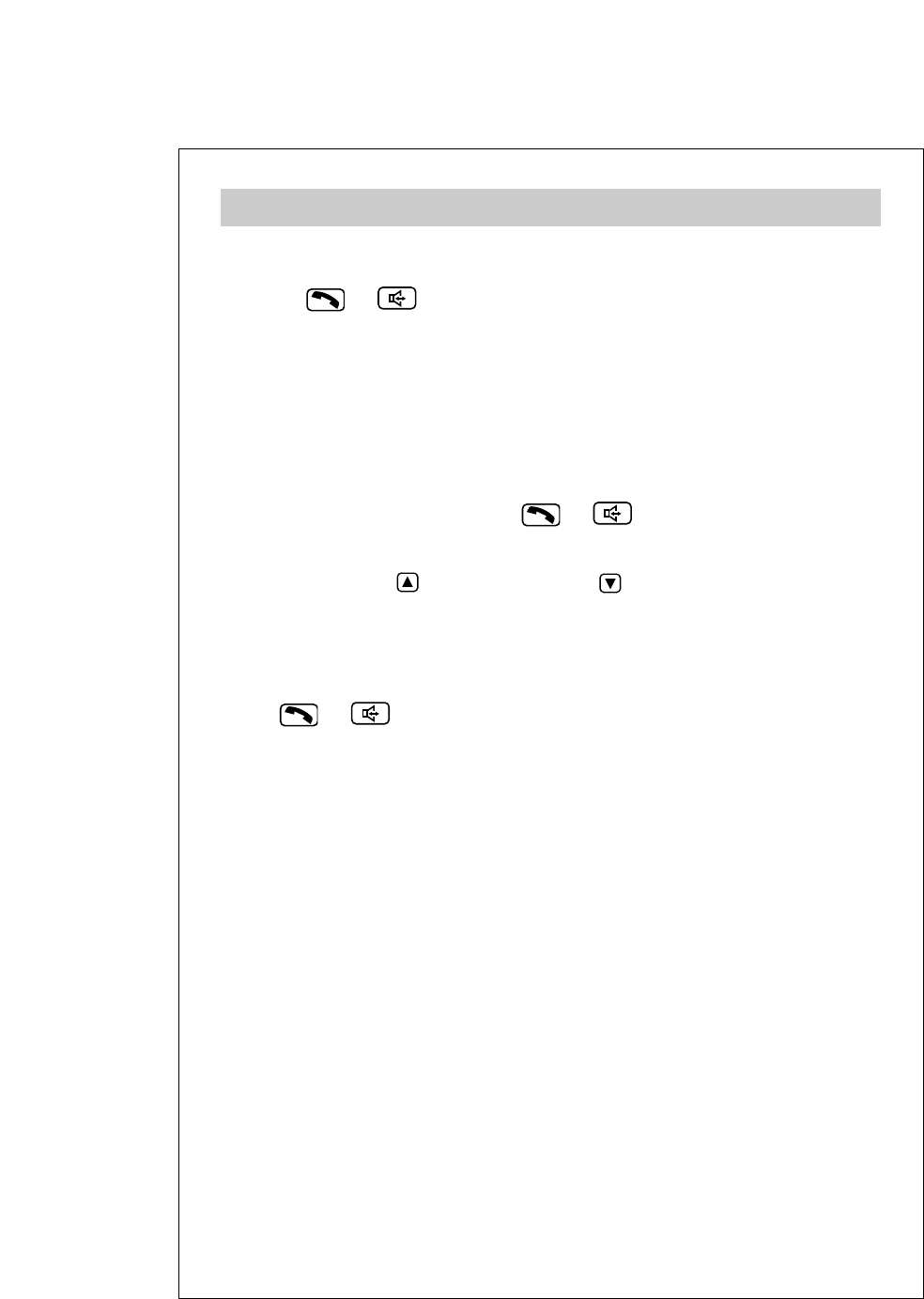
–8–
■To make a call
1 Press or .
2 Dial a telephone number.
3 To hang up, press (OFF) or place the handset on the charger.
•If "No link to base. Walk closer to base and try again" is
displayed and an alarm tone sounds in step 1, move closer to the base unit,
and try again.
•To redial the last number, press or , then press
(PAUSE/REDIAL).
•To adjust the handset volume/speaker volume:
To increase, press . To decrease, press .
•To put a call on hold, press (HOLD/CLEAR).
•To release the hold, press (HOLD/CLEAR).
■To answer a call
Press or .
Making/Answering Calls with the Cordless Handset
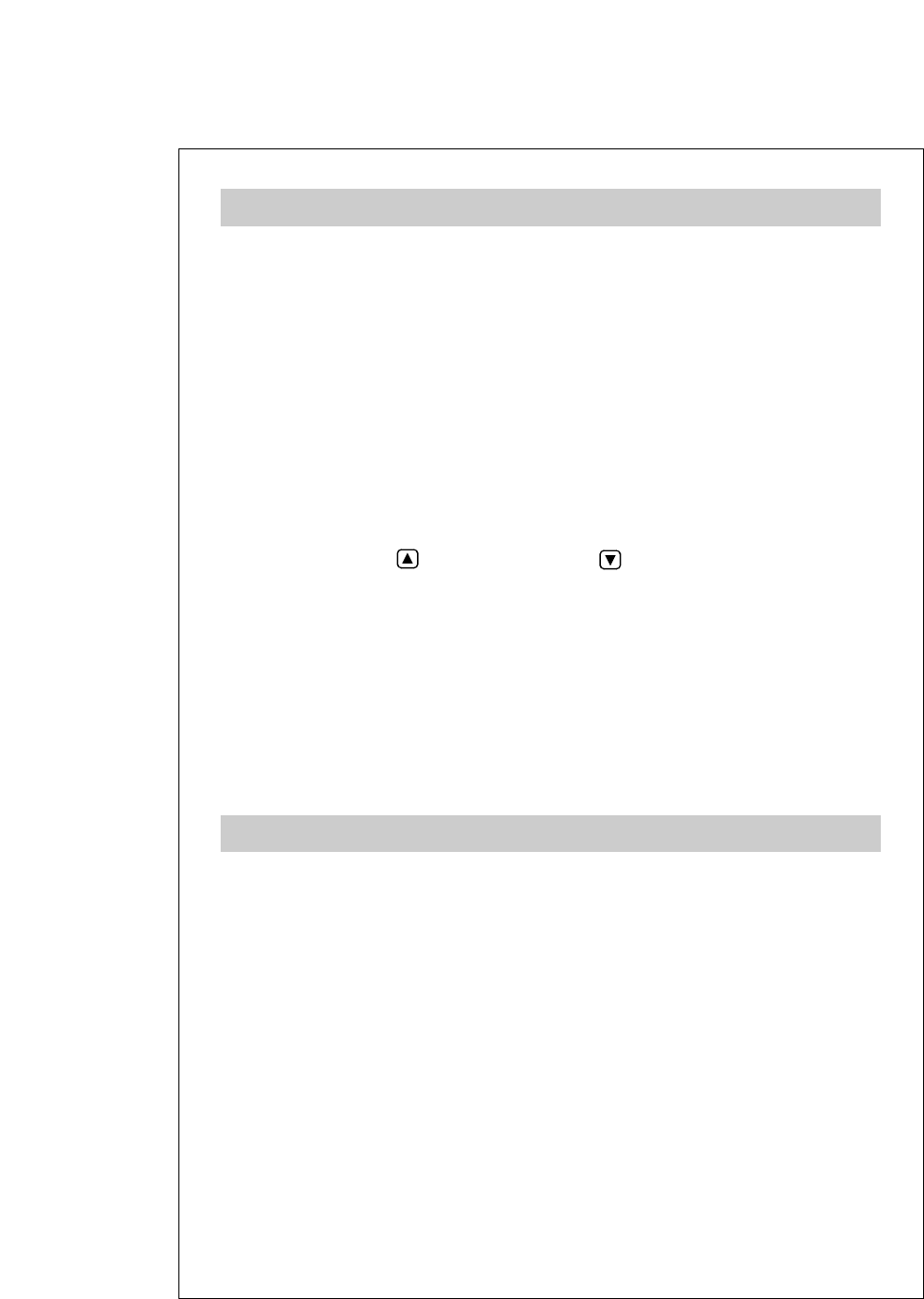
–9–
Making/Answering Calls with the Base Unit
■To make a call
1 Lift the handset off the cradle or press (DIGITAL!SP-PHONE).
2 Dial a telephone number.
3 Talk into the handset or the MIC (microphone).
4
To hang up, place the handset on the cradle or press (DIGITAL!SP-PHONE).
•To redial the last number, lift the handset off the cradle or press
(DIGITAL!SP-PHONE), and then press (REDIAL/PAUSE).
•To adjust the handset volume/speaker volume:
To increase, press . To decrease, press .
•To put a call on hold, press (HOLD).
•To release the hold:
—when using the speakerphone, press (DIGITAL!SP-PHONE) or lift the
handset.
—when using the handset, press (HOLD).
■To answer a call
Lift the handset off the cradle or press (DIGITAL!SP-PHONE).
Caller ID Service
This unit is compatible with a Caller ID service offered by your telephone
company.
After subscribing to a Caller ID service, the calling party’s information will be
displayed after the first ring.
The unit can record information of up to 50 different callers in the caller list.
The Caller List information is sorted from the most recent to the oldest call.
When the unit receives the 51st call, the oldest call is deleted.
If your unit is connected to a PBX system which does not support Caller ID
services, you cannot access those services. Please consult your equipment
supplier.

–10–
Automatic Answering Operation
■ How to use the mailboxes
The unit accommodates three mailboxes (Mailbox 1, 2 and 3). A caller can
leave a message in a specified mailbox. If a mailbox is not specified,
messages are recorded in the mailbox 1.
■ When a caller calls
The caller can select a mailbox by pressing (#) and (1) (Mailbox 1), pressing
(#) and (2) (Mailbox 2) or pressing (#) and (3) (Mailbox 3), while the greeting is
played. The caller can then record a message in the mailbox after a beep.
OR
The caller waits until the greeting finishes, and records a message after a
beep. The message will be recorded in the Mailbox 1.
■ Setting the unit to answer calls
Press (ANSWER!ON) to turn on the answering system.
•The indicator lights and “Answer set”is heard.
Listening to Messages
You can see the total number of recorded messages on the base unit display.
If the ANSWER ON indicator flashes and the mailbox icon(s) flash(es) on the
display, new messages have been recorded in the mailbox(es).
To listen to the messages, press (MAILBOX!1), (MAILBOX!2) or (MAILBOX!3).
•When you have new messages, the unit announces the number of new
messages and plays them back.
•When you have no new messages, the unit plays back all recorded
messages.

–11–
Important Safety Instructions
When using this unit, basic safety precautions should always be followed to
reduce the risk of fire, electric shock, or personal injury.
11. Read and understand all instructions.
12. Follow all warnings and instructions marked on this unit.
13. Unplug this unit from AC outlets before cleaning. Do not use liquid or
aerosol cleaners. Use a damp cloth for cleaning.
14. Do not use this unit near water, for example, near a bathtub, washbowl,
kitchen sink, or the like.
15. Place this unit securely on a stable surface. Serious damage and/or injury
may result if the unit falls.
16. Do not cover slots and openings on the unit. They are provided for
ventilation and protection against overheating. Never place the unit near
radiators, or in a place where proper ventilation is not provided.
17. Use only the power source marked on the unit. If you are not sure of the
type of power supplied to your home, consult your dealer or local power
company.
18. Do not place objects on the power cord. Install the unit where no one can
step or trip on the cord.
19. Do not overload wall outlets and extension cords. This can result in the
risk of fire or electric shock.
10. Never push any objects through slots in this unit. This may result in the
risk of fire or electric shock. Never spill any liquid on the unit.
11. To reduce the risk of electric shock, do not disassemble this unit. Take the
unit to an authorized servicenter when service is required. Opening or
removing covers may expose you to dangerous voltages or other risks.
Incorrect reassembly can cause electric shock when the unit is
subsequently used.
12. Unplug this unit from the wall outlet and refer servicing to an authorized
servicenter when the following conditions occur:
A. When the power supply cord or plug is damaged or frayed.
B. If liquid has been spilled into the unit.
C. If the unit has been exposed to rain or water.
D. If the unit does not work normally by following the operating
instructions. Adjust only controls covered by the operating instructions.
Improper adjustment may require extensive work by an authorized
servicenter.
E. If the unit has been dropped or physically damaged.
F. If the unit exhibits a distinct change in performance.
13. During thunderstorms, avoid using telephones except cordless types.
There may be a remote risk of an electric shock from lightning.
14. Do not use this unit to report a gas leak, when in the vicinity of the leak.
SAVE THESE INSTRUCTIONS

–12–
CAUTION:
To reduce the risk of fire or injury to persons, read and follow these
instructions.
1. Use only the battery(ies) specified.
2. Do not dispose of the battery(ies) in a fire. They may explode. Check with
local waste management codes for special disposal instructions.
3. Do not open or mutilate the battery(ies). Released electrolyte is corrosive
and may cause burns or injury to the eyes or skin. The electrolyte may be
toxic if swallowed.
4. Exercise care in handling batteries in order not to short the battery to
conductive materials such as rings, bracelets, and keys. The battery and/or
conductor may overheat and cause burns.
5. Charge the battery(ies) provided with or identified for use with this product
only in accordance with the instructions and limitations specified in this
manual.
WARNING:
TO PREVENT FIRE OR SHOCK HAZARD, DO NOT EXPOSE THIS
PRODUCT TO RAIN OR ANY TYPE OF MOISTURE.
•The AC adaptor is used as the main disconnect device, ensure that the AC
outlet is located/installed near the unit and is easily accessible.

–13–
FCC and Other Information
This equipment complies with Part 68 of the FCC rules and the requirements adopted
by the ACTA. On the bottom of this equipment is a label that contains, among other
information, a product identifier in the format US:ACJ-----.
If requested, this number must be provided to the telephone company.
Registration No. .....................................................(found on the bottom of the unit)
Ringer Equivalence No. (REN) ...........................................................................1.0B
A plug and jack used to connect this equipment to the premises wiring and telephone
network must comply with the applicable FCC Part 68 rules and requirements adopted
by the ACTA. A compliant telephone cord and modular plug is provided with this
product. It is designed to be connected to a compatible modular jack that is also
compliant.
The REN is used to determine the number of devices that may be connected to a
telephone line. Excessive RENs on a telephone line may result in the devices not
ringing in response to an incoming call. In most but not all areas, the sum of RENs
should not exceed five (5.0). To be certain of the number of devices that may be
connected to a line, as determined by the total RENs, contact the local telephone
company. For products approved after July 23, 2001, the REN for this product is part of
the product identifier that has the format US:AAAEQ##TXXXX. The digits represented
by ## are the REN without a decimal point (e.g., 03 is a REN of 0.3).
If this equipment causes harm to the telephone network, the telephone company will
notify you in advance that temporary discontinuance of service may be required. But if
advance notice isn’t practical, the telephone company will notify the customer as soon
as possible. Also, you will be advised of your right to file a complaint with the FCC if
you believe it is necessary.
The telephone company may make changes in its facilities, equipment, operations or
procedures that could affect the operation of the equipment. If this happens the
telephone company will provide advance notice in order for you to make necessary
modifications to maintain uninterrupted service.
If trouble is experienced with this equipment, for repair or warranty information, please
contact a Factory Servicenter or other Authorized Servicer. If the equipment is causing
harm to the telephone network, the telephone company may request that you
disconnect the equipment until the problem is resolved.
Connection to party line service is subject to state tariffs. Contact the state public utility
commission, public service commission or corporation commission for information.
If your home has specially wired alarm equipment connected to the telephone line,
ensure the installation of this equipment does not disable your alarm equipment. If you
have questions about what will disable alarm equipment, consult your telephone
company or a qualified installer.

–14–
WHEN PROGRAMMING EMERGENCY NUMBERS AND(OR) MAKING TEST CALLS
TO EMERGENCY NUMBERS:
1) Remain on the line and briefly explain to the dispatcher the reason for the call.
2)
Perform such activities in the off-peak hours, such as early morning or late evenings.
This device complies with Part 15 of the FCC Rules. Operation is subject to the
following two conditions: (1) This device may not cause harmful interference, and (2)
this device must accept any interference received, including interference that may
cause undesired operation.
Privacy of communications may not be ensured when using this phone.
CAUTION:
Any changes or modifications not expressly approved by the party responsible for
compliance could void the user’s authority to operate this device.
Note:
This equipment has been tested and found to comply with the limits for a Class B
digital device, pursuant to Part 15 of the FCC Rules. These limits are designed to
provide reasonable protection against harmful interference in a residential installation.
This equipment generates, uses, and can radiate radio frequency energy and, if not
installed and used in accordance with the instructions, may cause harmful interference
to radio communications. However, there is no guarantee that interference will not occur
in a particular installation. If this equipment does cause harmful interference to radio or
television reception, which can be determined by turning the equipment off and on, the
user is encouraged to try to correct the interference by one or more of the following
measures:
—Reorient or relocate the receiving antenna.
—Increase the separation between the equipment and receiver.
—Connect the equipment into an outlet on a circuit different from that to which the
receiver is connected.
—Consult the dealer or an experienced radio/TV technician for help.
Some cordless telephones operate at frequencies that may cause interference to
nearby TVs and VCRs. To minimize or prevent such interference, the base of the
cordless telephone should not be placed near or on top of a TV or VCR. If interference
is experienced, move the cordless telephone further away from the TV or VCR. This will
often reduce, or eliminate, interference.
Operating near 2.4GHz electrical appliances may cause interference. Move away from
the electrical appliances.

CAUTION:
To comply with FCC RF exposure requirements, the base unit should be installed with
its antenna located at 1.5 cm or more from persons and handset should be carried with
the specific belt-clip provided for the handset to ensure compliance. Other non-tested
belt-clips or similar body-worn accessories may not comply, therefore, should be
avoided.
This equipment is hearing aid compatible as defined by the FCC in 47 CFR Section
68.316.
•Environment — do not place the unit in a room where the temperature is less than
5°C (41°F) or greater than 40°C (104°F). Allow 10 cm (4") clearance around the unit
for proper ventilation. Avoid excessive smoke, dust, mechanical vibration, shock, or
direct sunlight.
•
Medical —consult the manufacturer of any personal medical devices, such as
pacemakers or hearing aids, to determine if they are adequately shielded from external
RF (radio frequency) energy. (The unit operates in the frequency range of 2400MHz to
2480MHz, and the power output level can range 0.04 watts to 0.161 watts.) Do not use
the unit in health care facilities if any regulations posted in the area instruct you not to
do so. Hospitals or health care facilities may be using equipment that could be sensitive
to external RF (radio frequency) energy.
•Routine care — wipe the unit with a soft cloth. Do not use benzine, thinner, or any
abrasive powder. When you leave the unit unused for a long period of time, unplug the
AC adaptor from the outlet.
•
If there is any trouble — disconnect the unit from the telephone line and connect a
known working phone. If the known working phone operates properly, have your unit
repaired by a Factory Servicenter or other Authorized Servicer. If the known working
phone does not operate properly, consult your telephone company.
When you hold the phone to your ear, noise might be heard in your Hearing Aid.
Some Hearing Aids are not adequately shielded from external RF (radio frequency)
energy. If noise occurs, use an optional headset accessory or the speakerphone
option (if applicable) when using this phone. Consult with your audiologist or Hearing
Aid manufacturer about the availability of Hearing Aids which provide adequate
shielding to RF energy commonly emitted by digital devices.
–15–
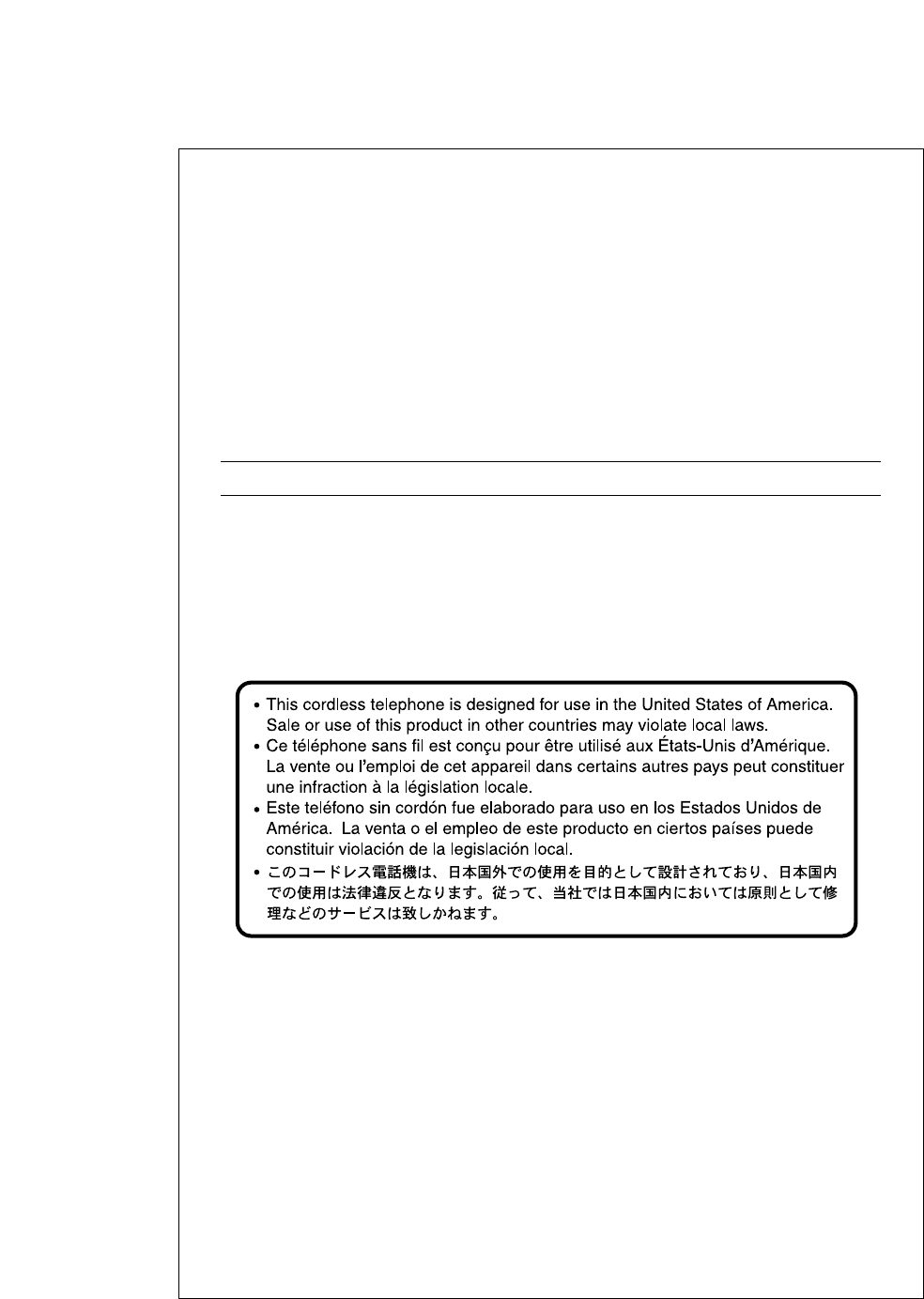
For product service
•Call 1-800-211-PANA(7262) for the location of an authorized servicenter.
•Panasonic’s e-mail address for customer inquiries:
consumerproducts@panasonic.com
for customers in the USA or Puerto Rico ONLY
When you ship the product
•Carefully pack your unit, preferably in the original carton.
•Attach a letter, detailing the symptom, to the outside of the carton.
Symptom
•Send the unit to an authorized servicenter, prepaid and adequately insured.
•Do not send your unit to the Panasonic Consumer Electronics Company listed
below or to executive or regional sales offices. These locations do not repair
consumer products.
Panasonic Consumer Electronics Company,
Division of Matsushita Electric Corporation of America
One Panasonic Way, Secaucus, New Jersey 07094
Panasonic Sales Company,
Division of Matsushita Electric of Puerto Rico, Inc.
Ave. 65 de Infantería, Km. 9.5, San Gabriel Industrial Park
Carolina, Puerto Rico 00985